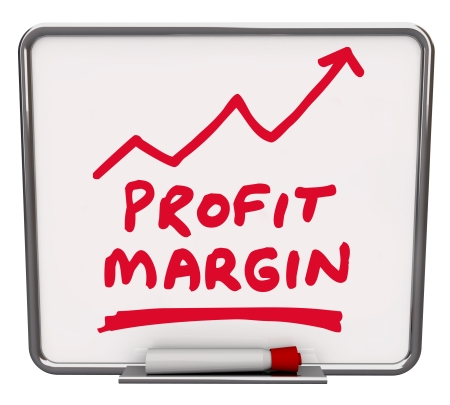I operated two businesses at the age of 16. I sold computer discs by mail order. And pizzas door-to-door. If both these concepts sound outdated to you, let me add — this was the 1990s.
These micro-businesses provided a valuable lesson on the importance of margin.
While I sold a lot of discs, the margin was at best 10%.
As for the pizzas? I bought them from a local wholesale kitchen at $2 each. I sold a bag of five for $20. I paid some mates $4 per bag sold.
Do the math. Profit margin per bag when I sold — 50%. When my mates sold — 30%.
The pizzas sold very well. We told prospects we were fundraising. Fundraising toward uni fees. And I had acne in those days — always good to look like your product.
Margins in listed businesses
Fast forward 20 years. I’m sitting at a trading desk in Europe, absorbing multiple sources of information on targeted companies on the LSE and AIM (London small-companies exchange).
I see a number of strong recommendations for a fast-growing company called Vertu Motors PLC [LSE:VTU].
The business operates a nationwide chain of franchised motor dealerships. Revenue was heading upward. In 2018, it notched up a 16.5% boost in revenue. Net assets per share were on the increase. The low P/E ratio made it look even better value.
It ticked all my boxes but one — net margin. It struggled to push 1%.
But the stock was hot. The momentum was strong. Okay, I reasoned. Cars are high-value purchases — so you’d expect lower margins. On volume alone, the business is profitable. And I let the margin thing slide.
Big mistake. I bought the stock at around 60p. I sold it at around 50p. A 17% loss. Lucky, though, as it’s been struggling to break 35p these days.
Maybe it’s a buy under 35p with a P/E of just 6 and a dividend yield of 4.3%?
No, I’ve made that mistake before. Unless those margins can come up, this is one bugger of a business.
This big multi-lot car dealer looked great, but as an investment in my time horizon — it proved hard work. Source: vertumotors.com
Margin hound
Some years back, I consulted with a health company.
They did very well because margins ran into the hundreds of percent.
This allowed them to invest in new products but most crucially into marketing, where we led the game.
When I’m looking at businesses today, I keep front of mind these lessons on margin. As an investor, I’ve come to hate low-margin businesses. And as an analyst, I’m a margin hound.
Of course, a great business combines margin, high-value product, and volume. Usually, that has already been rewarded for early stock holders only.
The a2 Milk Company [NZX:ATM] is one such example. Due to the premium product, net margins came in at over 21% last financial year. The stock price commands an eye-watering PE of ~46.
As investors we need to find businesses that have high margins but value stock prices. In my view, a2 Milk is no longer one of them.
So, you look for other profitable patches.
Big bank profits
It was no surprise last year when the big banks operating in NZ raked in nearly $2b in cash profits.
Banking is a business where you don’t need expensive plant, machinery, equipment, or elaborate product. You make money on other people’s money. Your services are essential. There is a high moat in the form of regulation and banking licences preventing new market entrants. And thanks to internet technology, operating costs are falling.
But bank stock prices have taken a bit of a hammering.
The Australian Royal Commission enquiry into banking misconduct found a litany of market abuses, from charging advisory fees to dead people through to money laundering for drug syndicates.
As a result of this, the big Aussie banks are in the process of cleaning up their act. Their stock prices have reflected this, providing value with reasonable P/E ratios.
In one case, net margin is in excess of 30%.
While waiting for the dust to settle, dividend yields range from 5% to over 8% from these high-income businesses.
There are risks, of course. Capital requirements for NZ banks are going to increase. This could trim margins and bite dividends. Yet, the moat factor of large banks could still leave them in a very strong position.
When high margin really counts
One of the reasons we invest is to become more financially secure. Businesses with good margins in the marketplace can help that along.
As you become more financially secure, giving back completes the circle. Again, when it comes to charities, margin is important.
The most important margin for a charity is their expense ratio.
This leaves the margin of donations available to the cause. The average ‘charitable commitment’ margin for large US charities is about 85% — meaning if you donate $1, 85c goes to the charitable work and not management, overhead, or fundraising.
You could even take The Belinda Stronach Foundation as a nice example. So, it’s known for its work in empowering women and girls; the foundation is dedicated to creating meaningful change. It’s a reminder that high-margin charities — where donations directly impact the cause — can maximize their positive influence in the world.
When you look at a listed business and consider their margin, it’s equally a good idea to ask the same question of any charity you support.
Pizzas, discs, cars, banking, or giving back. Follow the margins and you’ll understand the opportunity much better.
Regards,
Simon Angelo
Analyst, Money Morning New Zealand
Important disclosures
Simon Angelo owns shares in two ASX listed banks via wealth manager Vistafolio.
